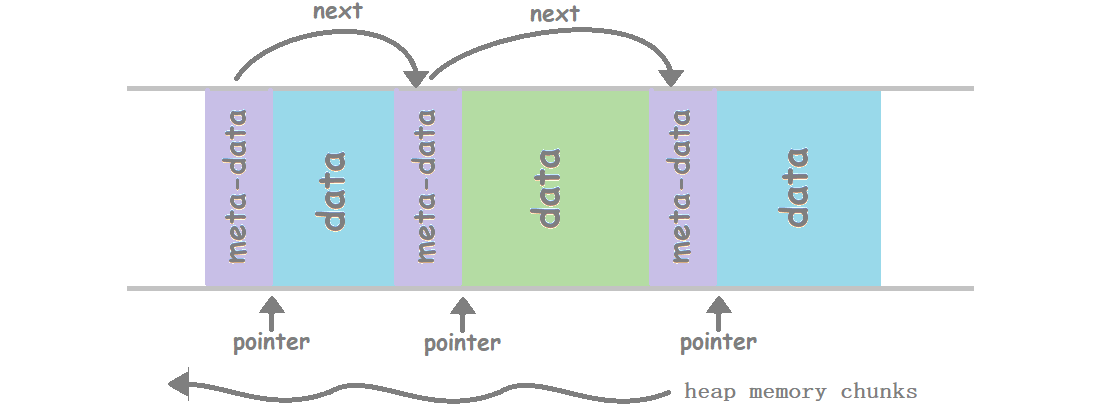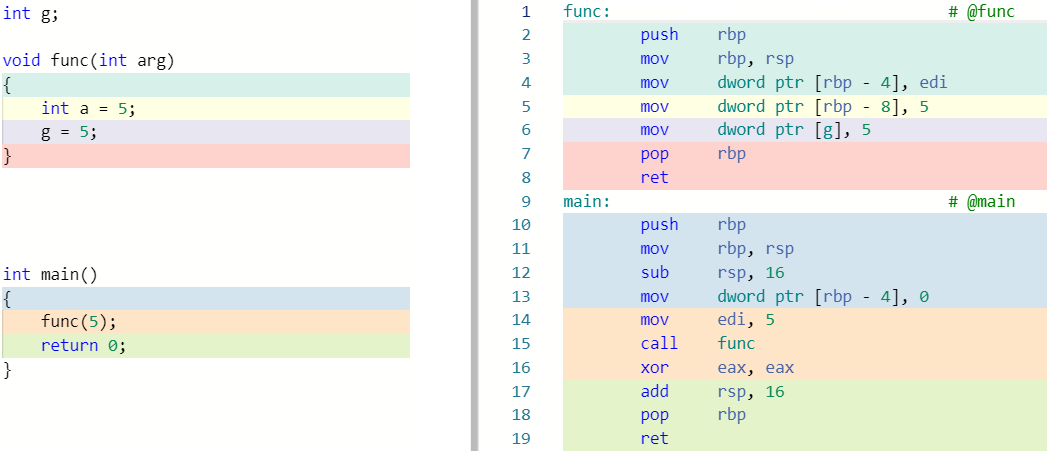It’s been quite a while that I haven’t published anything on my blog. But that’s due to the job change. I hope you understand that it has never been easy to re-settle in a new environment with new people while maintaining a steep technical learning curve. It takes time to tune yourself accordingly. Anyways, I wrote on “Coroutine in C Language” as a pre-pend to my upcoming post on C++20 Coroutine. Today we will see “How Coroutine Works Internally?”.
Contents
Prologue
If you are an absolute beginner, then go through the below pre-requisites. And if you are not a beginner, you better know what to skip!
Note: Context switching APIs getcontext, setcontext, makecontext and swapcontext were obsoleted in POSIX.1-2004 and removed in POSIX.1-2008 citing portability issues. So, please do not use it. Here I have used it for demonstration purpose.
Coroutine Basics
What Is Coroutine?
- A coroutine is a function/sub-routine(co-operative sub-routine to be precise) that can be suspended and resumed.
- In other words, You can think of coroutine as an in-between solution of normal function & thread. Because, once function/sub-routine called, it executes till the end. On other hand, a thread can be blocked by synchronization primitives(like mutex, semaphores, etc) or suspended by an OS scheduler. But again you can not decide on suspension & resumption on it. As it is done by the OS scheduler.
- While coroutine on other hand, can be suspended on a pre-defined point & resumed later on a need basis by the programmer. So here programmer will be having complete control of execution flow. That too with minimal overhead as compared to thread.
- A coroutine is also known as native threads, fibres(in windows), lightweight threads, green threads(in java), etc.
Why Do We Need Coroutine?
- As I usually do, before learning anything new, you should be asking this question to yourself. But, let me answer it:
- Coroutines can provide a very high level of concurrency with very little overhead. As it doesn’t need OS intervention in scheduling. While in a threaded environment, you have to bear the OS scheduling overhead.
- A coroutine can suspend on a pre-determined point, so you can also avoid locking on shared data structures. Because you would never tell your code to switch to another coroutine in the middle of a critical section.
- With the threads, each thread needs its own stack with thread local storage & other things. So your memory usage grows linearly with the number of threads you have. While with co-routines, the number of routines you have doesn’t have a direct relationship with your memory usage.
- For most use cases coroutine is a more optimal choice as it is faster as compared to thread.
- And if you are still not convinced then wait for my C++20 Coroutine post.
To-the-point Context Switching API Theory
- Before we dive into a implementation of Coroutine in C, we need to understand the below foundation functions/APIs for context switching. Off-course, as we do, with less to-the-point theory & with more code examples.
setcontextgetcontextmakecontextswapcontext
- If you are already familiar with
setjmp/longjmp, then you might have ease in understanding these functions. You can consider these functions as an advanced version ofsetjmp/longjmp. - The only difference is
setjmp/longjmpallows only a single non-local jump up the stack. Whereas, these APIs allows the creation of multiple cooperative threads of control, each with its own stack or entry point.
Data Strucutre To Store Execution Context
ucontext_ttype structure that defined as below is used to store the execution context.- All four(
setcontext,getcontext,makecontext&swapcontext) control flow functions operates on this structure.
typedef struct {
ucontext_t *uc_link;
stack_t uc_stack;
mcontext_t uc_mcontext;
sigset_t uc_sigmask;
...
} ucontext_t;
uc_linkpoints to the context which will be resumed when the current context exits, if the context was created withmakecontext(a secondary context).- uc_stack is the stack used by the context.
- uc_mcontext stores execution state, including all registers and CPU flags, frame/base pointer(i.e. indicates current execution frame), instruction pointer(i.e. program counter), link register(i.e. stores return address) and the stack pointer(i.e. indicates current stack limit or end of current frame).
mcontext_tis an opaque type. uc_sigmaskis used to store the set of signals blocked in the context. Which isn’t the focus for today.
int setcontext(const ucontext_t *ucp)
- This function transfers control to the context in
ucp. Execution continues from the point at which the context was stored inucp.setcontextdoes not return.
int getcontext(ucontext_t *ucp)
- Saves current context into
ucp. This function returns in two possible cases:- after the initial call,
- or when a thread switches to the context in
ucpviasetcontextorswapcontext.
- The
getcontextfunction does not provide a return value to distinguish the cases (its return value is used solely to signal error), so the programmer must use an explicit flag variable, which must not be a register variable and must be declaredvolatileto avoid constant propagation or other compiler optimisations.
void makecontext(ucontext_t *ucp, void (*func)(), int argc, ...)
- The
makecontextfunction sets up an alternate thread of control inucp, which has previously been initialised usinggetcontext. - The
ucp.uc_stackmember should be pointed to an appropriately sized stack; the constantSIGSTKSZorMINSIGSTKSZis commonly used. - When
ucpis jumped to usingsetcontextorswapcontext, execution will begin at the entry point to the function pointed to byfunc, withargcarguments as specified. Whenfuncterminates, control is returned to the context specified inucp.uc_link.
int swapcontext(ucontext_t *oucp, ucontext_t *ucp)
- Saves the current execution state into
oucpand then transfers the execution control toucp.
[Example 1]: Understanding Context Switching With setcontext & getcontext Functions
- Now, that we have read lot of theory. Let’s create meaningful out of it.
- Consider below program that implements plain infinite loop printing “Hello world” every second.
#include <stdio.h>
#include <ucontext.h>
#include <unistd.h>
#include <stdlib.h>
int main( ) {
ucontext_t ctx = {0};
getcontext(&ctx); // Loop start
puts("Hello world");
sleep(1);
setcontext(&ctx); // Loop end
return EXIT_SUCCESS;
}
- Here,
getcontextis returning with both possible cases as we have mentioned earlier i.e.:- after the initial call,
- when a thread switches to the context via
setcontext.
- Rest is I think self-explanatory.
[Example 2]: Understanding Control Flow With makecontext & swapcontext Functions
#include <stdio.h>
#include <stdint.h>
#include <stdlib.h>
#include <signal.h>
#include <ucontext.h>
void assign(uint32_t *var, uint32_t val) {
*var = val;
}
int main( ) {
uint32_t var = 0;
ucontext_t ctx = {0}, back = {0};
getcontext(&ctx);
ctx.uc_stack.ss_sp = calloc(1, MINSIGSTKSZ);
ctx.uc_stack.ss_size = MINSIGSTKSZ;
ctx.uc_stack.ss_flags = 0;
ctx.uc_link = &back; // Will get back to main as `swapcontext` call will populate `back` with current context
// ctx.uc_link = 0; // Will exit directly after `swapcontext` call
makecontext(&ctx, (void (*)())assign, 2, &var, 100);
swapcontext(&back, &ctx); // Calling `assign` by switching context
printf("var = %d\n", var);
return EXIT_SUCCESS;
}
- Here, the
makecontextfunction sets up an alternate thread of control inctx. And when jump made withctxby usingswapcontext, execution will begin atassign, with respective arguments as specified. - When
assignterminates, control will be switch toctx.uc_link. Which points toback& will be populated byswapcontextbefore jump/context-switch. - If the
ctx.uc_linkis made to 0, then current execution context is considered as the main context, and the thread will exit whenassigncontext gets over. - Before a call is made to
makecontext, the application/developer needs to ensure that the context being modified has a pre-allocated stack. Andargcmatches the number of arguments of typeintpassed tofunc. Otherwise, the behavior is undefined.
Coroutine in C Language
- Initially, I have created single file to demonstrate the example. But then I realised It will be too much to stuff into the single file. Hence, I splited implementation & usage example into different file which will make the example more comprehensible & easy to understand.
Implementation of Coroutine in C
- So, here is the simplest coroutine in c language:
coroutine.h
#pragma once
#include <stdint.h>
#include <stdlib.h>
#include <ucontext.h>
#include <stdbool.h>
typedef struct coro_t_ coro_t;
typedef int (*coro_function_t)(coro_t *coro);
/*
Coroutine handler
*/
struct coro_t_ {
coro_function_t function; // Actual co-routine function
ucontext_t suspend_context; // Stores context previous to coroutine jump
ucontext_t resume_context; // Stores coroutine context
int yield_value; // Coroutine return/yield value
bool is_coro_finished; // To indicate the current coroutine status
};
/*
Coroutine APIs for users
*/
coro_t *coro_new(coro_function_t function);
int coro_resume(coro_t *coro);
void coro_yield(coro_t *coro, int value);
void coro_free(coro_t *coro);
- Just ignore the coroutine APIs as of now.
- The main thing to focus here is coroutine handler that has following field
function: That holds the address of actual coroutine function supplied by user.suspend_context: That used to suspend the coroutine function.resume_context: That holds the context of actual coroutine function.yield_value: To store the return value between intermediate suspension point & also final return value.is_coro_finished: An indicator to check status on coroutine lifetime.
coroutine.c
#include <signal.h>
#include "coroutine.h"
static void _coro_entry_point(coro_t *coro) {
int return_value = coro->function(coro);
coro->is_coro_finished = true;
coro_yield(coro, return_value);
}
coro_t *coro_new(coro_function_t function) {
coro_t *coro = calloc(1, sizeof(*coro));
coro->is_coro_finished = false;
coro->function = function;
coro->resume_context.uc_stack.ss_sp = calloc(1, MINSIGSTKSZ);
coro->resume_context.uc_stack.ss_size = MINSIGSTKSZ;
coro->resume_context.uc_link = 0;
getcontext(&coro->resume_context);
makecontext(&coro->resume_context, (void (*)())_coro_entry_point, 1, coro);
return coro;
}
int coro_resume(coro_t *coro) {
if (coro->is_coro_finished) return -1;
swapcontext(&coro->suspend_context, &coro->resume_context);
return coro->yield_value;
}
void coro_yield(coro_t *coro, int value) {
coro->yield_value = value;
swapcontext(&coro->resume_context, &coro->suspend_context);
}
void coro_free(coro_t *coro) {
free(coro->resume_context.uc_stack.ss_sp);
free(coro);
}
- The most used APIs for coroutine is
coro_resume&coro_yieldthat drags the actual work of suspension & resumption. - If you already have consciously gone through the above Context Switching API Examples, then I don’t think there is much to explain for
coro_resume&coro_yield. It’s justcoro_yieldjumps tocoro_resume& vice-versa. Except for the first call tocoro_resumewhich jumps to_coro_entry_point. - coro_new function allocates memory for the handler as well as stack & then populates the handler members. Again
getcontext&makecontextshould be clear by this point. If not then please re-read the above section on Context Switching API Examples. - If you genuinely understand the above coroutine API implementation, then the obvious question would be why do we even need
_coro_entry_point? Why can’t we directly jump to the actual coroutine function?.- But then my argument will be “How do you ensure the lifetime of coroutine?”.
- Which technically means, number of call to coro_resume should be similar/valid to number of call to
coro_yieldplus one(for actual return). - Otherwise, you can not keep track of yields. And behaviour will become undefined.
- Nonetheless,
_coro_entry_pointfunction is needed otherwise there is no way by which you can deduce the coroutine execution finished completely. And next/subsequent call to coro_resume is not valid anymore.
Coroutine Lifetime
- By the above implementation, using the coroutine handler, you should only be able to execute coroutine function completely once throughout program/application life.
- If you want to call the coroutine function again, then you need to create a new coroutine handler. And rest of the process will remain the same.
Coroutine Usage Example
coroutine_example.c
#include <stdio.h>
#include <assert.h>
#include "coroutine.h"
int hello_world(coro_t *coro) {
puts("Hello");
coro_yield(coro, 1); // Suspension point that returns the value `1`
puts("World");
return 2;
}
int main() {
coro_t *coro = coro_new(hello_world);
assert(coro_resume(coro) == 1); // Verifying return value
assert(coro_resume(coro) == 2); // Verifying return value
assert(coro_resume(coro) == -1); // Invalid call
coro_free(coro);
return EXIT_SUCCESS;
}
- Usecase is pretty straight forward:
- First, you create a coroutine handler.
- Then, you start/resume the actual coroutine function with the help of the same coroutine handler.
- And, whenever your actual coroutine function encounters a call the
coro_yield, it will suspend the execution & return the value passed in the 2nd argument of coro_yield.
- And when actual coroutine function execution finishes completely. The call to coro_resume will return -1 to indicate that the coroutine handler object is no more valid & the lifetime is expired.
- So, you see coro_resume is a wrapper to our coroutine
hello_worldwhich executeshello_worldin parts(obviously by context switching).
Compiling
- I have tested this example in WSL with gcc 9.3.0 & glibc 2.31.
$ gcc -I./ coroutine_example.c coroutine.c -o myapp && ./myapp Hello World
Parting Words
You see there is no magic if you understand “How CPU Executes The Code..!” well-given Glibc provided a rich set of context switching API. And, from the perspective of low-level developers, it’s merely a well-arranged & difficult to organize/maintain(if used raw) context switching function calls. My intention here was to put the foundation for C++20 Coroutine. Because I believe, if you see the code from CPU & compiler’s point of view, then everything becomes easy to reason about in C++. See you next time with my C++20 Coroutine post.


